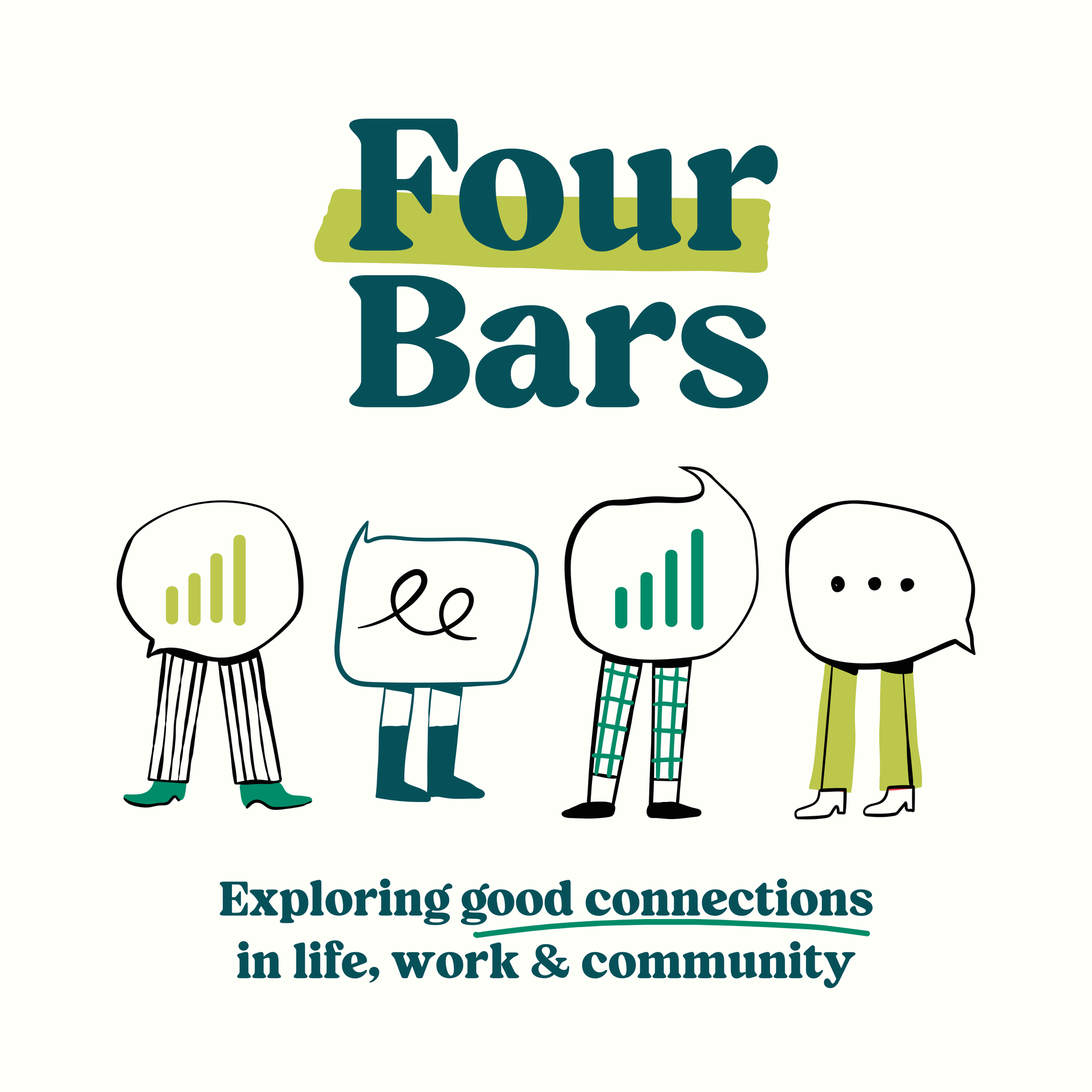The way we process information fundamentally shapes how we communicate, collaborate, and connect with others. In this illuminating episode, we dive deep into the "Tree vs Forest" dimension of the Interface Methods connectivity tool – exploring the profound difference between internal processors (Trees) who prefer thinking before speaking, and external processors (Forests) who develop their thoughts through conversation.
This distinction goes far beyond simple personality differences. As we explain, these processing preferences are behavioral, not hardwired, meaning anyone can adapt their approach once they understand the dynamics at play. Through compelling real-world examples, we reveal how these different processing styles can either create friction or foster remarkable collaboration when properly understood.
We share a fascinating case study of a high-level executive relationship nearly derailed by this very communication gap, and how simple awareness transformed their collaboration. You'll discover that neither style inherently predicts success – in one organization's sales team, top performers were evenly split between internal and external processors. The key difference? The top performers understood how to leverage their natural preferences while adapting to others.
For team leaders, this episode offers practical strategies to ensure balanced participation that honors both processing styles, including a revealing poker chip exercise that transforms group dynamics. Sales professionals and customer service representatives will gain valuable insights for recognizing and adapting to customer processing preferences, creating more productive interactions.
Whether you're building teams, managing relationships, or simply trying to connect more effectively with the people in your life, understanding the Tree vs Forest dynamic will transform how you communicate. Visit getedges.com/inter-face-methods to learn more about our connectivity tool and discover resources to help you build stronger, more effective connections.
Follow and stay connected:
Website: fourbarspodcast.com
YouTube: youtube.com/@FourBarsPodcast
Instagram: @edges_Inc
Facebook: EDGES Inc.
LinkedIn: EDGES Inc.
Never miss an update—follow, subscribe, and join the conversation!
More About this Episode
Tree and Forest: How Understanding Processing Preferences Can Transform Your Conversations
In our work with teams, clients, and communities over the years, one of the most impactful insights we've uncovered is this: how we process information deeply shapes how we communicate.
On this episode of the Four Bars podcast, we explored a concept we’ve worked with for over two decades as part of our Interface Methods behavioral tool: Tree and Forest. If you've ever felt like someone "wasn't listening" because they didn’t chime in immediately, or like a teammate was “talking in circles” when trying to explain something, this framework offers a powerful lens to understand those differences.
The Tree and Forest Dimension: What It Really Means
This behavioral component focuses on processing preference, specifically, whether we process internally or externally.
- Tree (Internal Processor): Trees prefer to do their thinking internally. They need time and space to reflect before speaking. They often feel most comfortable when they’ve had a chance to prepare and can feel overwhelmed or even dismissed in fast-paced discussions where spontaneous input is expected.
- Forest (External Processor): Forests think by talking. They thrive in open, fast-moving dialogue and need that verbal exchange to evolve their ideas. For them, the back-and-forth is not just a conversation, it’s part of the thinking process.
We chose the metaphors “tree” and “forest” intentionally. The Tree represents a strong, rooted inner processing style. The Forest, a vibrant, dynamic space of active dialogue and interconnectedness.
And here's the kicker: this has nothing to do with introversion or extroversion. Patti, for example, is introverted on the Myers-Briggs scale but a strong Forest when it comes to processing. She might prefer quiet time to recharge, but when it comes to thinking something through, she’s going to talk it out.
Why Understanding This Difference Matters
Once you recognize whether someone is a Tree or Forest, you unlock a new level of communication. You stop judging silence as disinterest. You stop assuming a stream of ideas equals a final decision.
How This Shows Up in Teams
In meetings, Forests tend to fill the air as they’re thinking out loud. Trees may stay silent but not because they don’t have anything to offer, but because they’re not ready yet. And without intention, Trees can be overlooked and Forests misunderstood.
That’s why we use simple strategies like giving everyone poker chips or pennies during group discussions. Each person gets a set number, and every time they contribute, they “spend” a chip. This levels the playing field, encouraging quieter processors to participate while helping talkative types self-regulate. One time, Forests even started buying chips from the Trees! That was a powerful teaching moment.
Common Missteps and How to Avoid Them
We’ve worked with executives and teams across industries, and one story stands out. A company president promoted a high-performing VP to SVP, and suddenly, things weren’t clicking. The president felt like the new SVP was making unilateral decisions too quickly. The SVP, in turn, thought they were just following through on direction.
What was really happening? The president was a Forest talking out ideas mid-meeting. The SVP was a Tree and assumed those ideas were finalized decisions. That mismatch almost derailed a promising career, but with a little coaching and clarity, they adapted. Today, they still work together successfully.
The lesson: knowing your own style isn’t enough. You also have to recognize and respect the style of the person across the table.
Adapting in Sales and Service Environments
This Tree/Forest dimension also has profound implications for customer service and sales. Here’s how we see it play out:
If You’re a Tree Selling to a Forest
Let’s say Ken (a Tree) is selling to Patti (a Forest). As a Forest, Patti wants interaction, real-time engagement, verbal dialogue, a sense that the rep is “in it” with her.
Trees can thrive here if they prepare. One top-performing salesperson we worked with (a strong Tree) built a library of scenarios and responses so he was ready for any direction a conversation might go. He was calm, confident, and incredibly responsive, because he had done the work in advance.
If You’re a Forest Selling to a Tree
This one is a little trickier. Trees might appear reserved or disengaged, but they’re listening and thinking deeply. Forests, like Patti, must be careful not to overwhelm them with too much spontaneous chatter.
If you're a Forest in this situation:
- Give them a preview: Send a meeting agenda or list of questions in advance.
- Give them space: Don’t expect an immediate answer. Pause.
- Follow up: Allow for a second conversation after they’ve had time to think.
Making It Work at Scale: Group Dynamics and Culture
In any organization, you're likely to have both Trees and Forests in the same room. When teams don't recognize these dynamics, they may unconsciously create cultures where one style is favored. Forests may be seen as more engaged or assertive. Trees might be overlooked or labeled “quiet” or “not collaborative,” when in fact, they simply need a different environment to thrive.
The key is to design systems and interactions that respect both preferences:
- Publish agendas ahead of meetings.
- Allow for asynchronous input (follow-up emails, post-meeting recaps).
- Clarify when you’re brainstorming vs. making decisions (“I’m just talking out loud here…” is a phrase we love).
- Intentionally invite participation from quieter voices.
These micro-adaptations build inclusion and equity without requiring anyone to change who they are. And that’s the beauty of behavioral tools like Interface Methods. Unlike personality assessments that measure what’s hardwired, this tool focuses on behaviors. The things we can recognize, respect, and adjust.
Interface Methods: Behavioral Science in Action
Our Interface Methods tool is built on behavioral science, not personality typing. Why? Because behavior is adaptive. You can learn to flex. You can shift your approach without abandoning your authenticity.
That’s why companies use Interface Methods not just for internal teams, but in customer interactions, vendor relationships, and prospecting. When you know whether someone is a Tree or a Forest (even if they haven’t taken the assessment), you can tailor your dialogue and improve outcomes across the board.
Some of our clients even track behavioral preferences as part of their KPIs, using clues from interactions to anticipate communication needs.
Connection Begins with Awareness
Our goal with this episode and with the Interface Methods tool is to help people understand themselves and each other better. Connection doesn’t require deep personal chemistry or hours of bonding. It starts with a simple but powerful awareness: Not everyone processes like you do.
When you tune in to that, when you respect those differences, something magical happens. Collaboration gets easier. Conversations become more productive. Teams feel more inclusive. And whether you're trying to close a deal or build a stronger community, that level of understanding is what makes the difference.
If you want to learn more, head to getedges.com/inter-face-methods. There’s a low-cost student version, training videos, scenario-based examples, and even a portal where you can explore your own preferences. Whether you're a Tree or a Forest, or somewhere in between, there's a better way to connect, and it starts here.



Member discussion: